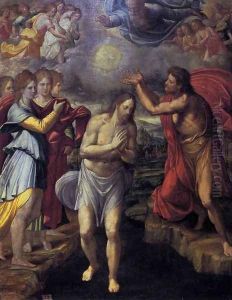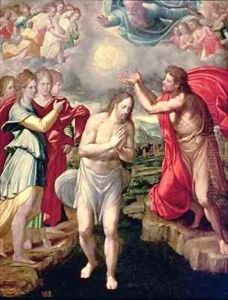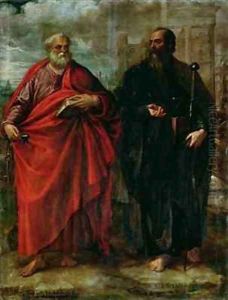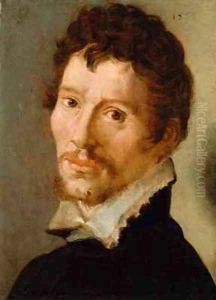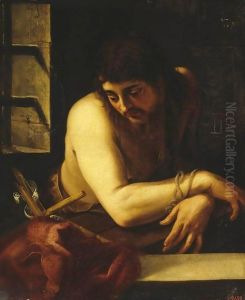Juan Fernandez de Navarrete Paintings
Juan Fernandez de Navarrete, commonly known as Juan Fernández Navarrete or 'El Mudo' (The Mute), was a Spanish painter of the Renaissance period. He was born in Navarrete, near Logroño in the Rioja region of Spain, in 1526. The nickname 'El Mudo' was given to him because he became deaf-mute following a childhood illness. Despite this disability, he became a prominent figure in the Spanish art world of his time.
Navarrete received his early training in art from Fray Vicente de Santo Domingo, who taught him the fundamentals of painting. His condition did not hinder his ability to learn from the masters of his time, and he later traveled to Italy to further his studies. Italy was then the center of the Renaissance, and Navarrete was able to immerse himself in the works of great Italian masters such as Titian, whose influence is evident in Navarrete's use of color and composition.
Upon his return to Spain, Navarrete was recognized for his skill and was appointed painter to King Philip II in 1568. At the royal court, he worked on various projects, most notably for the Monastery of El Escorial, which was being built by Philip II to be a royal mausoleum and a center for the Counter-Reformation. Navarrete produced a series of paintings for El Escorial, including biblical scenes and altarpieces, which are considered to be some of his finest works.
Navarrete's style is characterized by a combination of precise drawing, vivid coloration, and a thoughtful approach to composition. His religious works often feature serene and dignified figures set against a backdrop of dramatic landscapes or architectural settings. Unfortunately, many of his works have been lost or damaged over time, but those that survive, particularly his paintings at El Escorial, attest to his talent and contribution to the Spanish Renaissance.
Juan Fernandez de Navarrete died on March 28, 1579, in Toledo. Despite his relatively short career and the challenges he faced due to his disability, Navarrete's legacy endures as an example of the rich artistic culture of 16th-century Spain and the resilience of the human spirit in the face of adversity.
